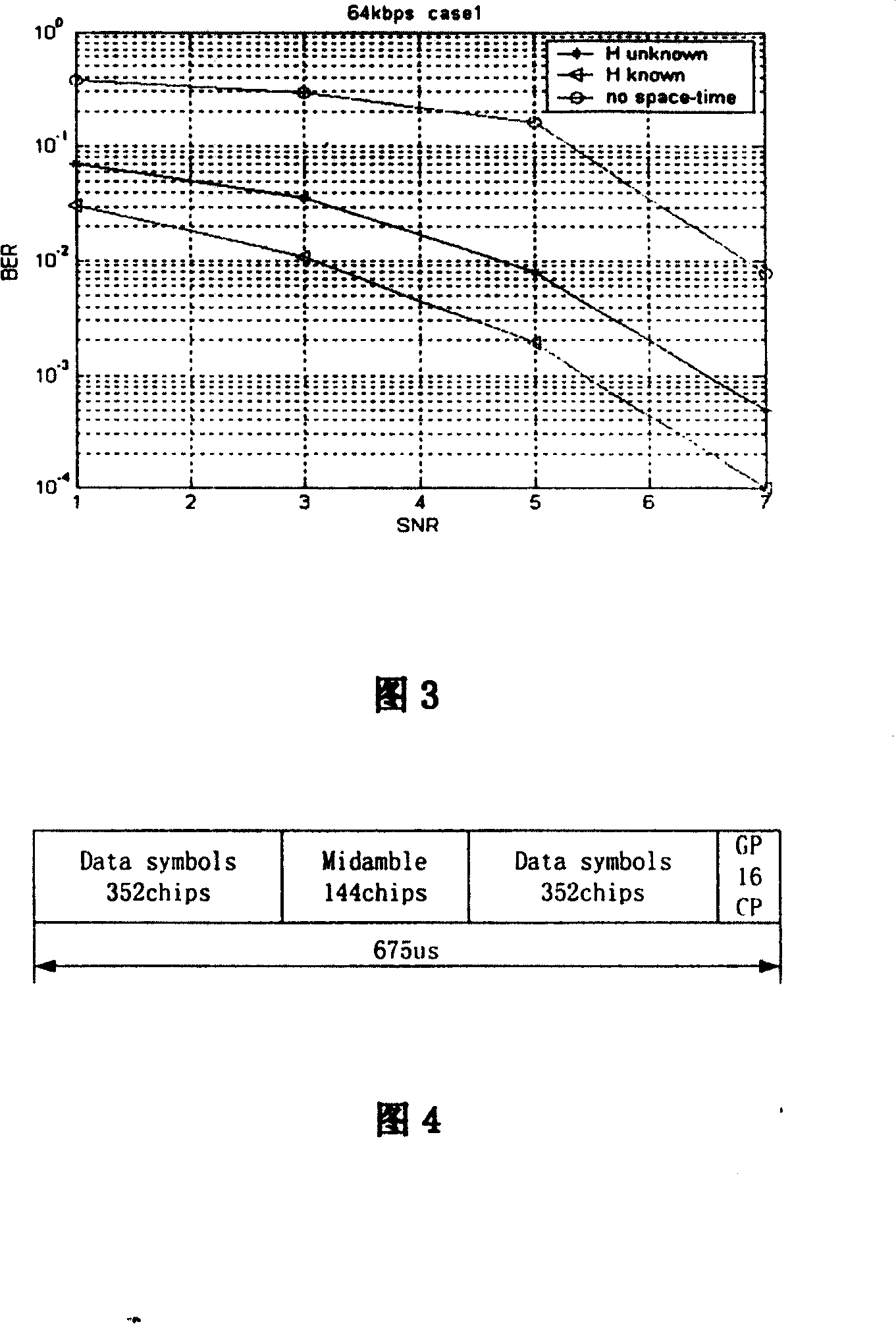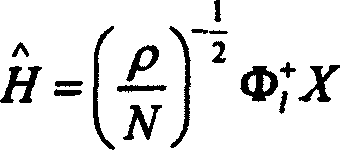TD-SCDMA system channel estimation method based on unitary blank time code
A TD-SCDMA and channel estimation technology, applied in the field of wireless communication, can solve the problems that the receiving end cannot be demodulated, information cannot be transmitted reliably and accurately, and channel estimation is difficult
- Summary
- Abstract
- Description
- Claims
- Application Information
AI Technical Summary
Problems solved by technology
Method used
Image
Examples
Embodiment Construction
[0011] unitary space-time code structure
[0012] Assuming that there are N transmitting antennas and M receiving antennas in the system, the fading coefficients between each transmitting antenna and receiving antenna pair are independent of each other, and the fading coefficients last for T symbol periods. For transmitting antennas and As far as the receiving antenna is concerned, the fading coefficient is unknown, and its sending and receiving signals can be expressed by the following formula: x tm = ρ / N Σ n = 1 N h nm s tn + W tm , t = 1 · · · · · · · T ...
PUM
 Login to View More
Login to View More Abstract
Description
Claims
Application Information
 Login to View More
Login to View More - R&D
- Intellectual Property
- Life Sciences
- Materials
- Tech Scout
- Unparalleled Data Quality
- Higher Quality Content
- 60% Fewer Hallucinations
Browse by: Latest US Patents, China's latest patents, Technical Efficacy Thesaurus, Application Domain, Technology Topic, Popular Technical Reports.
© 2025 PatSnap. All rights reserved.Legal|Privacy policy|Modern Slavery Act Transparency Statement|Sitemap|About US| Contact US: help@patsnap.com



